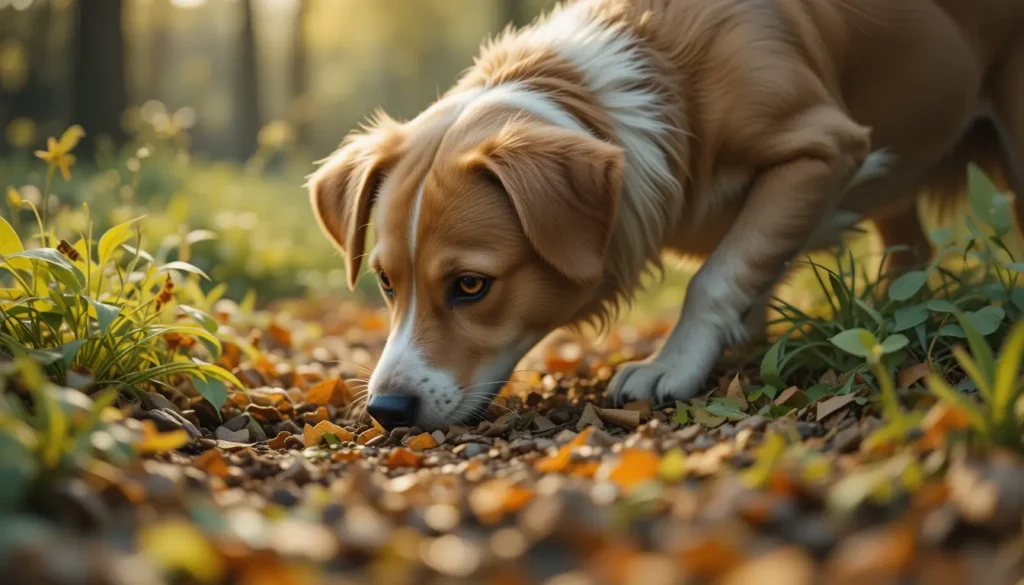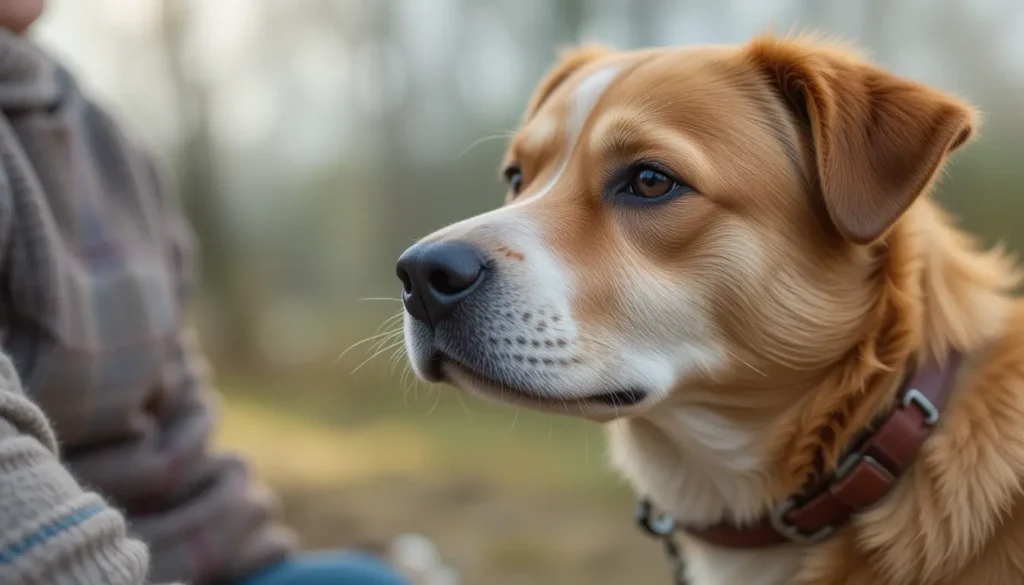Dogs need more than walks and food. Their brain needs exercise as much as their body. Teaching your dog to find hidden treats gives them mental work that prevents boredom. A bored dog can chew, bark, or dig. A busy dog with a job is calmer, happier, and healthier.
This game is also the safest way to bring out your dog’s natural scenting skill. Every dog has the ability to smell, but many dogs never get the chance to use this gift. Once your dog learns, you will notice more focus during play. The trust between you and your dog will grow because you are teaching them something meaningful.
Do not worry if your dog has never done this before. You do not need special tools, and you do not need much space. You need treats, patience, and the right steps. Soon you will see your dog search with excitement. That is what makes this game powerful.
Building the Base
This first step sets everything in motion. It is the point where your dog learns the meaning of the game. If this part is rushed, the rest of the training will not be as strong. So you want to build it with care.
Start by letting your dog watch you place a treat on the ground. Do not cover it or make it tricky yet. Say the cue you plan to use, such as “find it.” Keep your voice calm and clear. The moment your dog picks up the treat, praise warmly. Dogs connect actions to outcomes very fast. That means every success builds a stronger link between the cue, the action, and the reward.
Repeat this step several times. Each time your dog hears “find it” and sees the treat, their brain makes the connection stronger. Some dogs get it in a few tries. Others may need several short sessions across a day or two. Do not worry about speed. The goal here is clarity, not rushing.
Once your dog shows clear understanding—turning toward the treat as soon as they hear the cue—you can make it a little harder. Place the treat a few steps away but let your dog see where you put it. Give the same cue. As soon as they walk over and eat it, give praise. This builds the habit of moving toward a target when they hear your word.
At this stage, training should be short. Five minutes is enough. If you push too long, your dog may lose interest or get tired. A short, happy session works better than a long, draining one. End while your dog is still excited and eager. That way, they will look forward to the next round.
The key here is consistency. Use the same cue word every single time. Do not switch between “find it” one day and “search” the next. Pick one word and stick with it. Use the same praise style too. If you clap, cheer, or give a pat, keep it steady. Dogs thrive on patterns they can trust.
This is where a small training trick can help. Use high-value treats—something your dog loves most. That makes the game stronger in their mind. The more rewarding the outcome, the faster they learn.
Once your dog connects the cue word with the action of searching, you have built the foundation. Their brain now understands: When I hear that word, I should look for food. This simple step is the doorway to all the fun challenges ahead.
And here is the tease—up until now, your dog has seen where the treat goes. But very soon, you will remove that part. The moment you hide the treat, the game changes. That is when your dog’s natural scenting skill takes over. And that is when the excitement truly begins.
Expanding the Game
By this stage, your dog knows how to follow the cue and search for a hidden treat. Now it is time to stretch their skills and keep their brain growing. Expansion is important because dogs get bored when a game stays too easy. Adding variety makes the challenge exciting and keeps your dog focused.
Start by changing the environment. Instead of using the same room, move to another area of your home. You might use the living room one day and the bedroom the next. Place treats under cushions, behind a door, or under a small box. Always check that the spot is safe. Do not use sharp objects, unstable furniture, or areas your dog cannot reach safely. Safety makes the game enjoyable, while risk breaks trust.
With new spaces, your dog will need to work harder. They can no longer run straight to the spot they remember. Instead, they must scan the room with their nose. Every time they succeed, their confidence grows. Each challenge strengthens their focus. Keep your cue word the same, and keep your praise steady. That consistency acts as a clear guide while the difficulty rises.
Now you can make the search longer. Hide two or three treats in different areas. At first, place them in simple locations so your dog succeeds quickly. Then move to trickier spots. This teaches your dog that the game does not end after the first find. They will keep searching until every reward is discovered. This builds endurance for their mind and gives them a sense of purpose.
You can also bring in variety with pattern changes. Sometimes make the hiding spot easy, sometimes harder. Place some treats low on the ground, and others on a safe higher surface, such as a low stool. Switching the level of difficulty keeps your dog curious. Curiosity fuels learning. When your dog is curious, they are more engaged and more motivated.
Another way to expand is to control access to the room. Ask your dog to stay outside while you place the treats. Then let them in with your cue. This adds suspense and builds patience. Your dog learns that waiting is part of the game. The release into the room becomes a signal that the search is about to begin.
For dogs who enjoy a bigger challenge, use objects with small openings. Place a treat inside a container with holes, such as a safe plastic cup or a cardboard tube. Your dog will need to sniff carefully to locate the source of the smell. This adds depth to the exercise. The nose must now separate one scent from many around it.
By now, the payoff is clear. Your dog has a new daily job. A job that excites them, keeps their mind sharp, and balances their energy. Many behavior problems fade when a dog has mental work to do. That is the hidden value of expanding the game—it improves your dog’s daily life in ways you will notice outside of training too.
True Scent Work at Home
At this stage, your dog has moved beyond simple hidden treats. They are ready for a full scent challenge. This is where training becomes both fun and deeply rewarding. You are no longer just hiding food; you are creating puzzles that engage your dog’s brain and nose fully.
Start by introducing containers or closed boxes with small holes. Place a treat inside one of them. Mix the boxes around so the location is not obvious. Give your dog the cue, such as “find it.” They will sniff, nudge, and explore each box until they locate the treat. That moment when they succeed delivers a sense of victory that is powerful and memorable. It reinforces their confidence and their connection to the game.
Next, take the game outside. Outdoor spaces add variety and complexity. Hide treats in safe spots in your yard or garden. Place them under pots, behind safe garden objects, or in soil depressions. Different surfaces such as grass, soil, or mulch create new scents for your dog to detect. The environment challenges their nose and brain more than indoors. This builds advanced scent skills.
Safety remains critical. Avoid sharp objects, toxic plants, or areas with heavy foot traffic. Always supervise outdoor searches. Your dog must have freedom to explore but remain safe. Controlled outdoor games combine mental exercise with mild physical activity, creating a balanced experience.
Another way to deepen the challenge is using multiple scent sources. Place several boxes, some empty and some with treats. Your dog will need to sniff carefully, analyze, and select the correct target. This sharpens their focus, patience, and decision-making. Over time, your dog becomes adept at distinguishing smells, a skill used in working dogs like search-and-rescue or detection teams.
Bonding reaches a high point at this stage. Your dog waits for your cue, then trusts their own nose to complete the task. When they succeed, you praise and reward. This shared experience builds trust and joy. Your dog learns that following cues and using their natural skills leads to positive outcomes. This is teamwork in its purest form.
The climax is clear and satisfying: your dog is now using scent skills comparable to working dogs. They are more confident, mentally sharp, and fully engaged. You see the payoff in their behavior, happiness, and responsiveness. The games are no longer just training—they are a form of mental enrichment that strengthens your bond permanently.
By now, your dog has gone from watching you place a treat to mastering complex scent puzzles. The effort, patience, and consistency you invested have transformed their daily experience.
Now you know how to teach your dog to find hidden treats. Start simple, build slowly, and grow into advanced searching. Keep the game safe and fun. Your dog will learn faster when they enjoy it.
Do not train for too long. A few minutes a day keeps the skill fresh. Always praise your dog for effort, not just success. That way, they stay eager to play.
This game is more than training. It gives your dog mental work, prevents boredom, and makes them happier. It makes you part of their success, and that strengthens your bond.
The final takeaway is simple: your dog is capable of much more than you expect. All it takes is your guidance and some hidden treats to unlock their potential.




